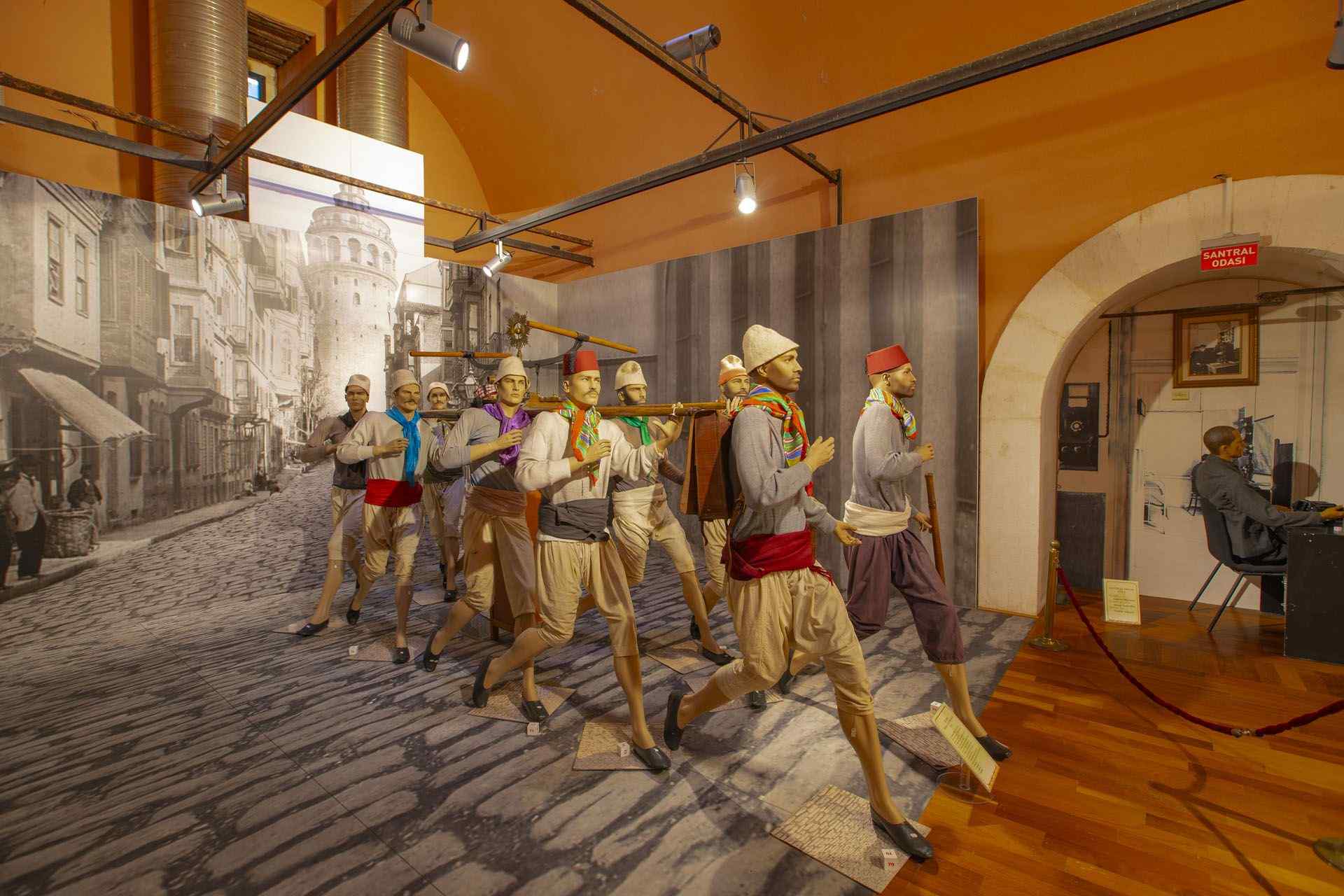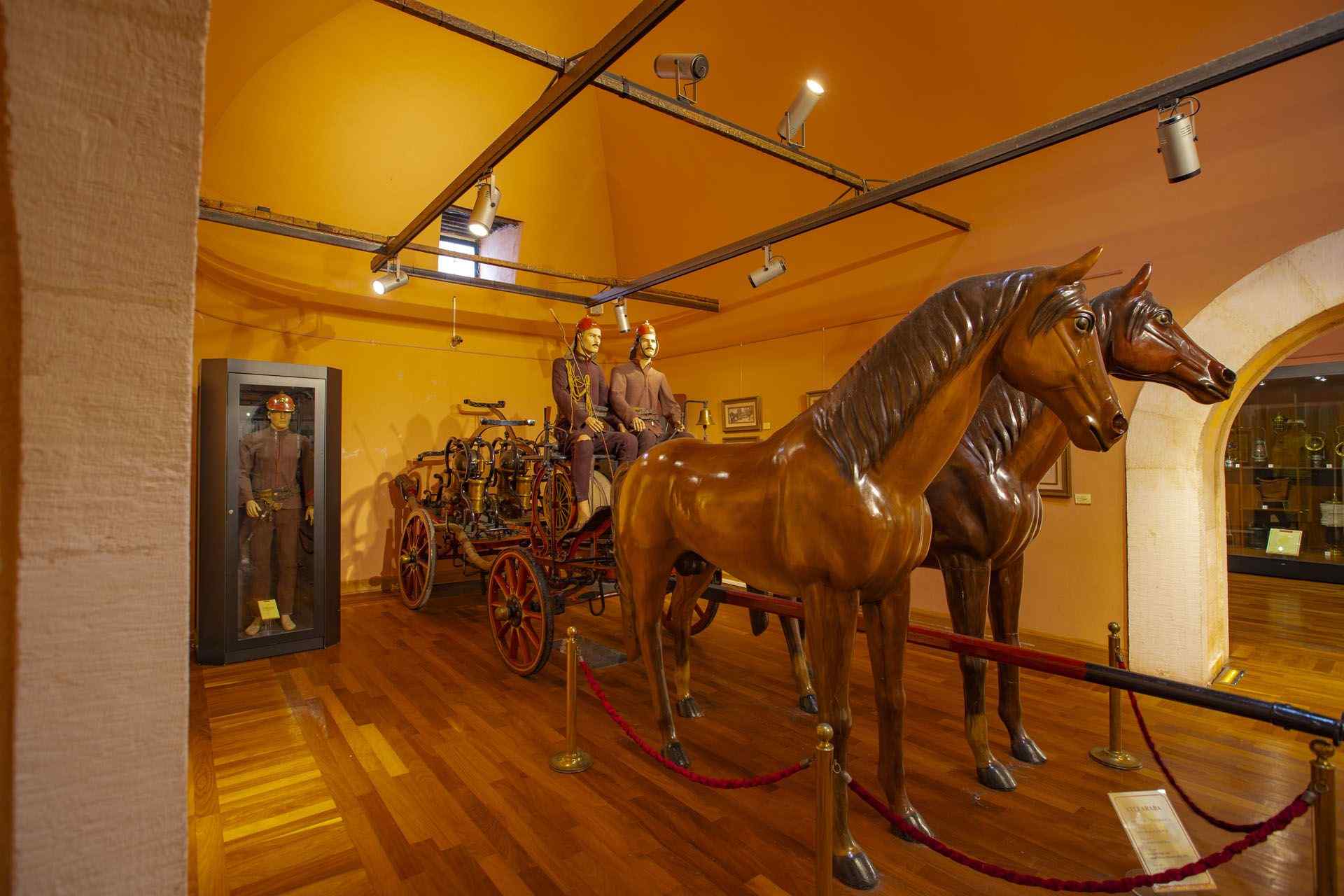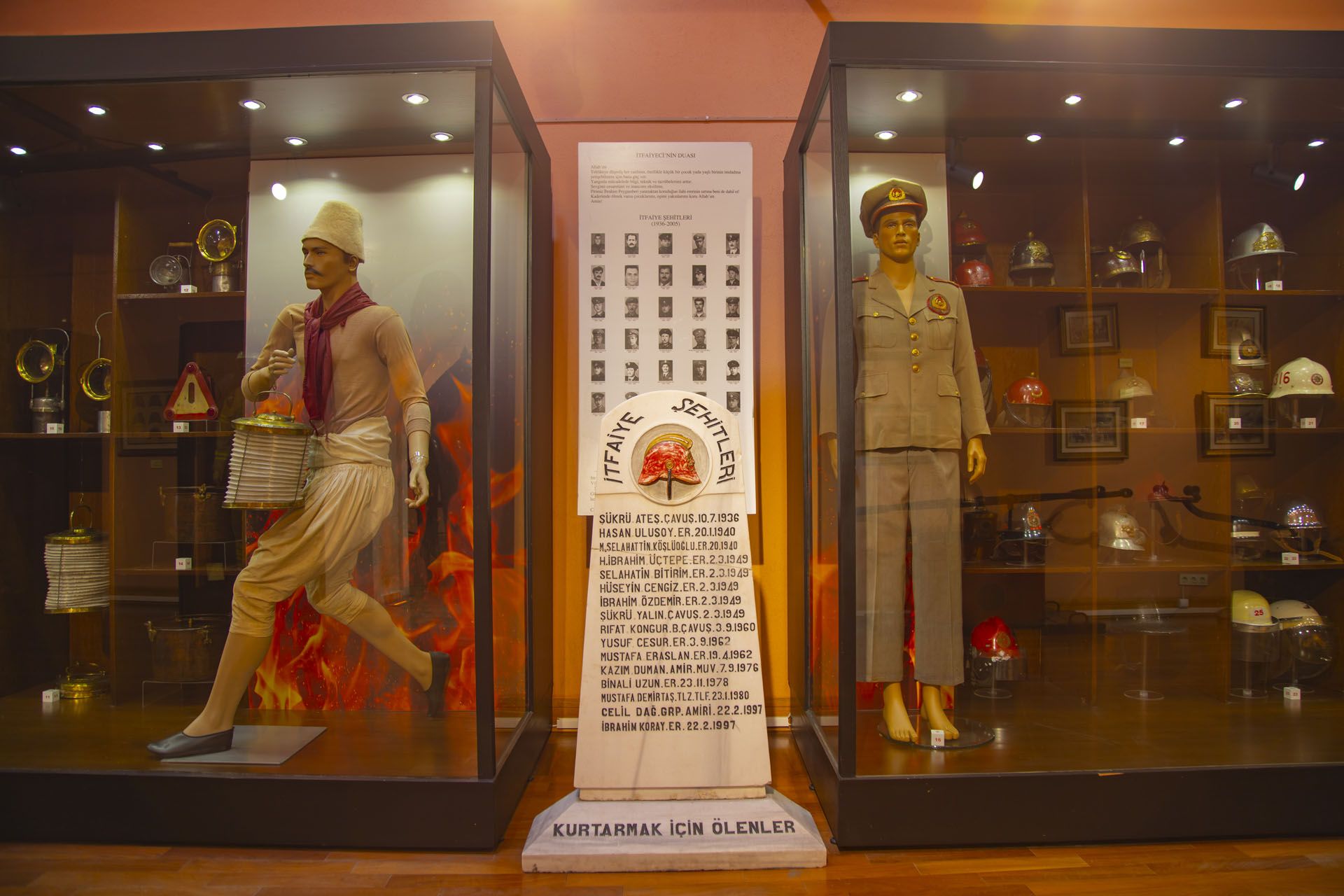Fire Department Museum ( İstanbul Kont Szechenyi Fire Museum) History, Exhibits, Entrance Fee, and Visiting Hours
The Istanbul Firefighting Museum (İstanbul Kont Szechenyi Fire Museum), originally established in 1931 next to the then Fire Department Headquarters in Fatih, has undergone several renovations and relocations. It showcases the evolution of firefighting in Istanbul through various historical periods.

The museum’s journey begins with the “Tulumbacılar Ocağı” era, dating back to the 17th century when firefighting was primarily handled by the “Tulumbacılar” (fire pumpers) using basic equipment. This period saw the establishment of organized firefighting units under the Ottoman Empire.

In the second phase, “Semt Tulumbacıları,” the Tulumbacılar system evolved post the dissolution of the Janissary Corps in 1826. This era witnessed the neighborhood-based firefighting approach, marked by local volunteers and the spread of fire pumps across different neighborhoods.
The third phase heralded a significant shift with the “Military Firefighting Era” under Kont Szechenyi. Post the 1870 Beyoğlu fire, Sultan Abdulaziz invited Kont Szechenyi, a Hungarian expert who modernized the fire brigade with military discipline and introduced advanced firefighting techniques and equipment. His contributions significantly enhanced the effectiveness and efficiency of the fire brigade in Istanbul.
The fourth and current phase of the Istanbul Fire Brigade reflects the modern era post the founding of the Turkish Republic. Here, the firefighting services have been restructured to meet contemporary global standards, ensuring better preparedness and response to fire emergencies.
The museum thus encapsulates the rich and dynamic history of firefighting in Istanbul, displaying a wide array of historical firefighting equipment, uniforms, and tools, reflecting the city’s unique firefighting heritage. Additionally, it serves as an educational center, providing valuable insights into the evolution of firefighting strategies and techniques, making it a significant cultural and historical site in Istanbul.

